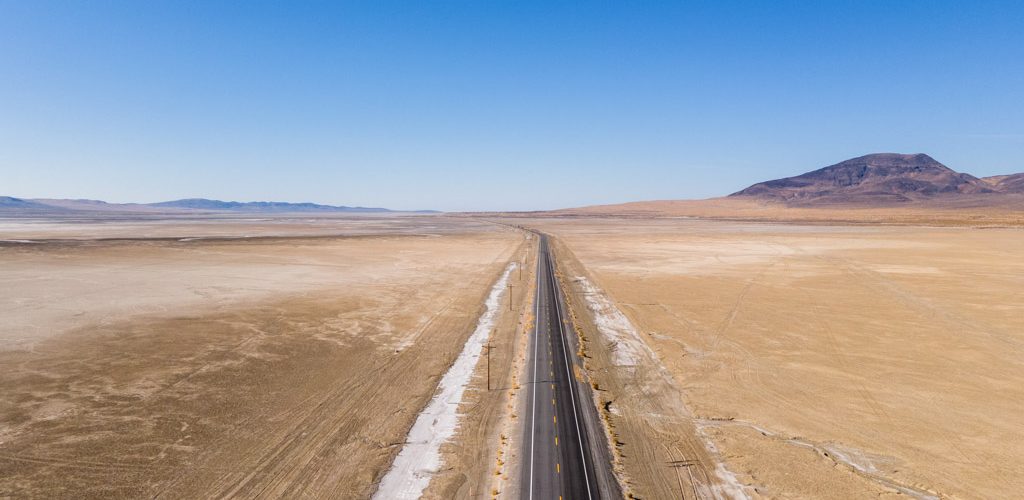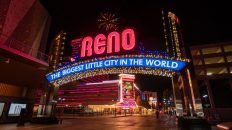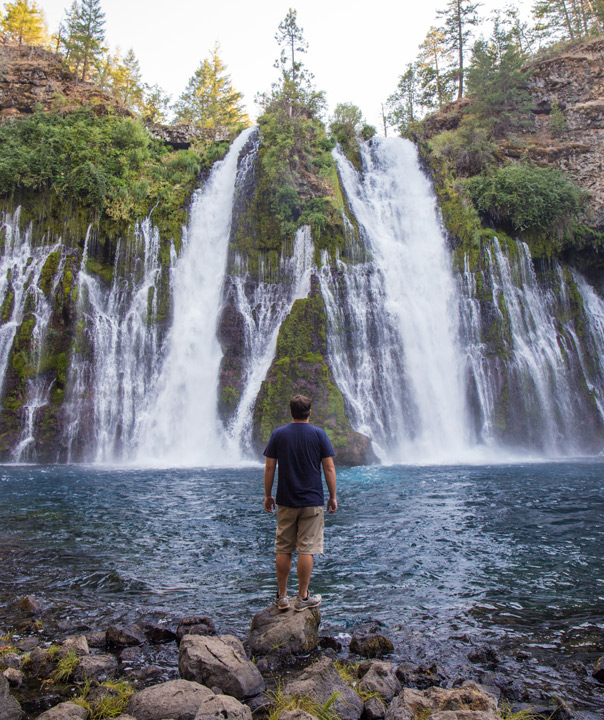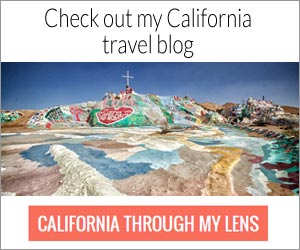The Loneliest Road was the name given to Highway 50 in Northern Nevada by Life Magazine in 1986. In their article, they even advised not to take the drive along this route, or to know your survival skills if you do choose to drive it. Since then, the highway has become a somewhat popular spot for road trips, and it is a great way to dive into Nevada’s beautiful scenery. My dad and I spent three days driving the route in October 2020, and here is all the information on our road trip so that you can follow along if you want to drive the Loneliest Road in America as well.
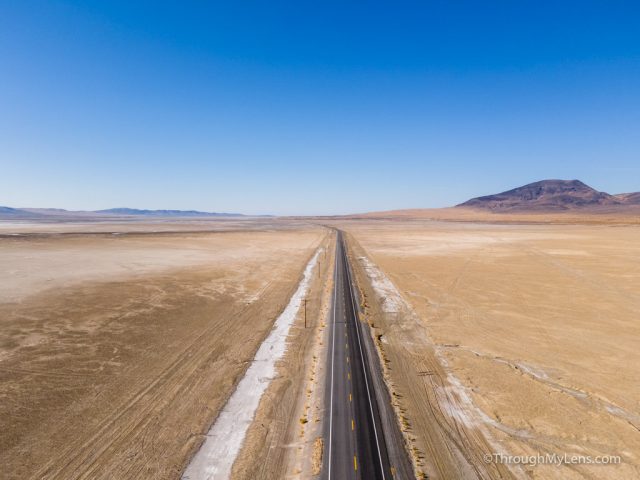
Details
- 3 days
- Cost: ~$800
- The trip began and ended in Reno (closest airport and car rental area)
- Do your research before you head out as it is desolate
Day 1
To begin the road trip, we made our way to Carson City early on the first day. We had a few spots we wanted to visit in Carson City before starting the official drive on Day 2. Here are the places we stopped.
Nevada State Railroad Museum
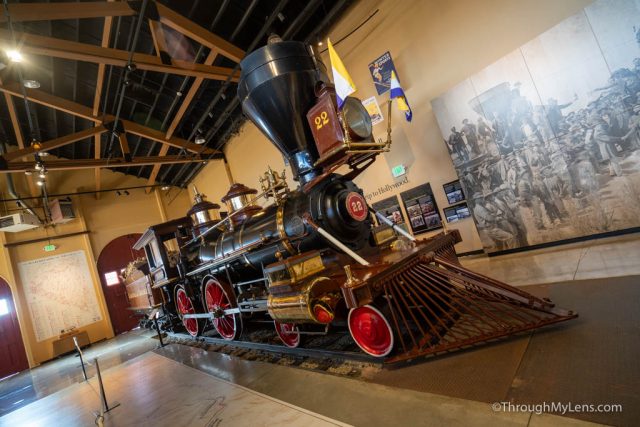
The Nevada State Railroad Museum in Carson City is one of a dozen or so railroad museums in Nevada and one of two on Highway 50. This is an amazing museum, with some truly stunning trains to see. The outside depot where they work on the trains is the main highlight. They have a one of a kind train that you can actually enter and more trains they are working on every day.
Nevada State Museum and Historic Carson City Mint
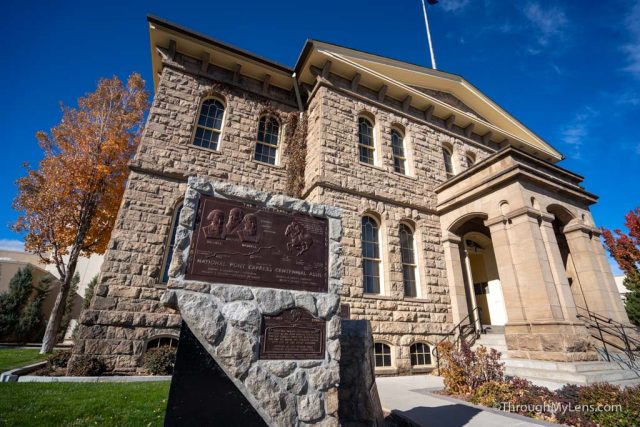
The second spot we visited was the Nevada State Museum, housed in the old Carson City Mint building. The museum is incredible on its own, with a fantastic mining exhibit on the bottom floor. However, the main reason to visit is to see the historic mint, which is actually still used to print coins multiple times a month. We happened to be there when it was printing coins, and it was fascinating. Check it out if you are in the area.
Day 2
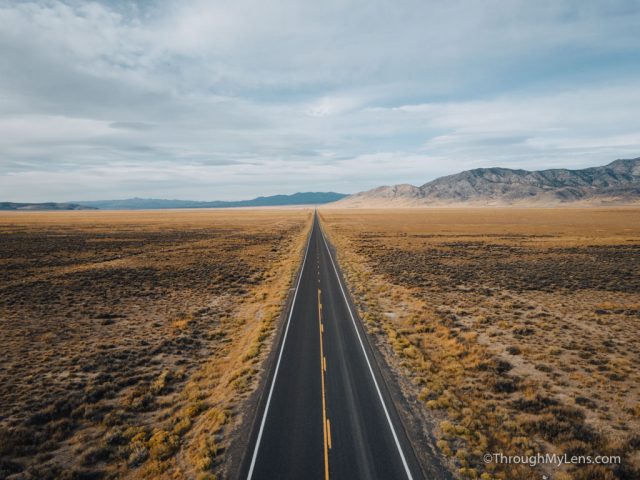
For the second day of our journey, we set out from Carson City with the end goal of getting to Eureka, NV that night. It is only a 4-hour drive, but we tried to stop as much as we could along the way to really experience the historic route. Here are all the places we stopped during our second day (note that this is a lot, and you may not want to stop at all of them).
Food Tip (Comma Coffee) – Before leaving Carson City, Comma Coffee is a great spot for coffee and breakfast. My dad and I both really enjoyed it.
Dayton
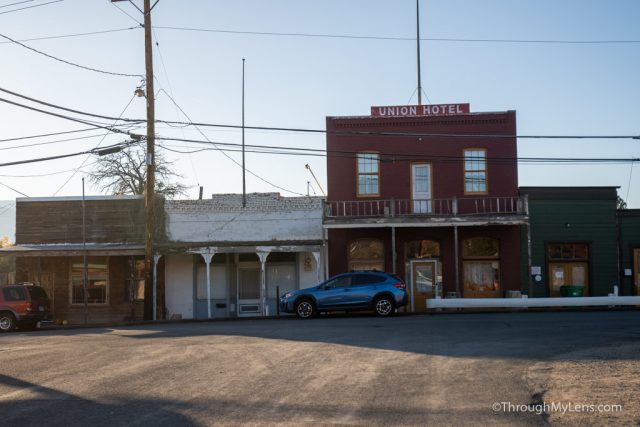
Next up, we arrived at the city of Dayton. There is not much to see in Dayton, but it is the first gold site that was found in Nevada. While in the city, we stopped at these three spots. There was also a lot of Pony Express history to read about on plaques here as well.
Historic sign
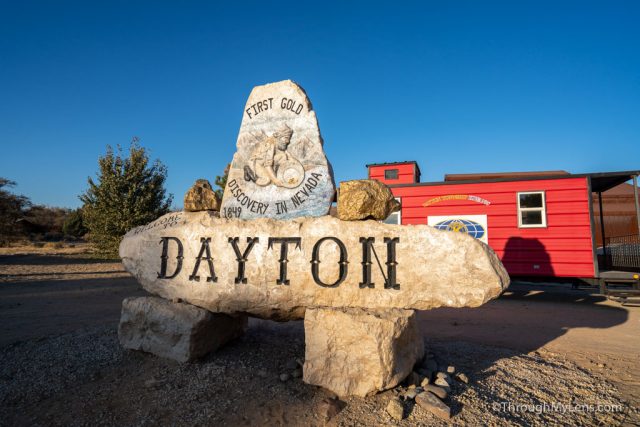
Cemetery
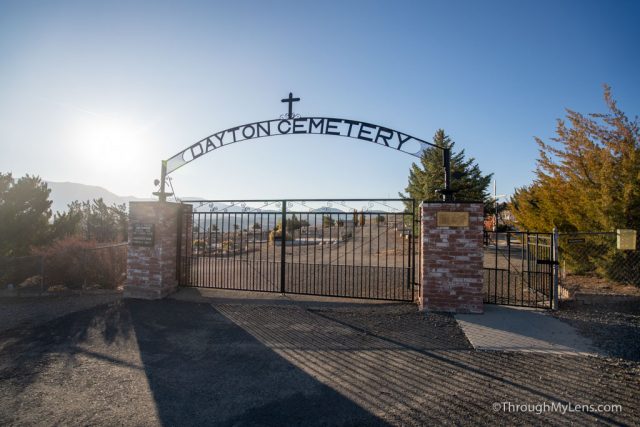
Virginia City (you have to backtrack to visit here)
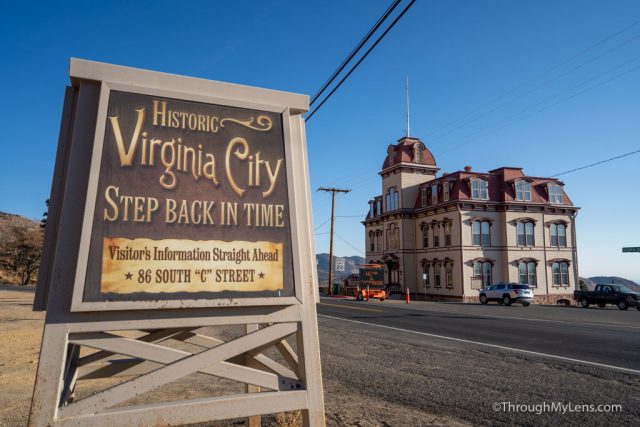
My dad and I wanted to see Virginia City, a popular tourist destination and home to one of Nevada’s best-preserved old towns. It can be hectic on the weekend, but it is a fun town to walk around and explore. Here are a few of the things we saw there.
Silver Queen Hotel
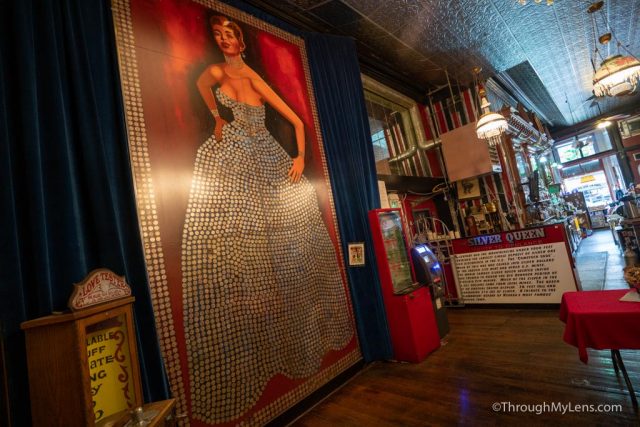
Bucket of Blood saloon
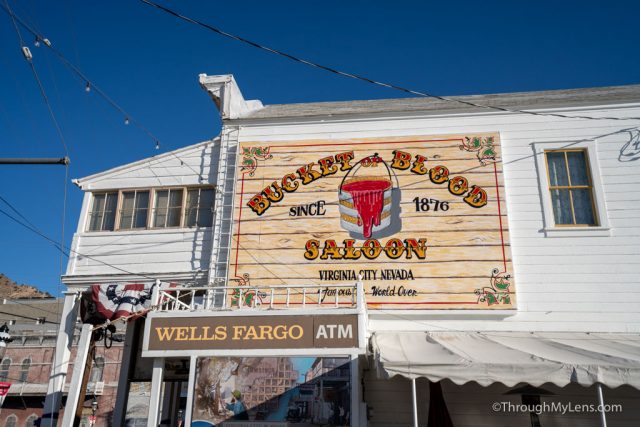
Way It Was Museum
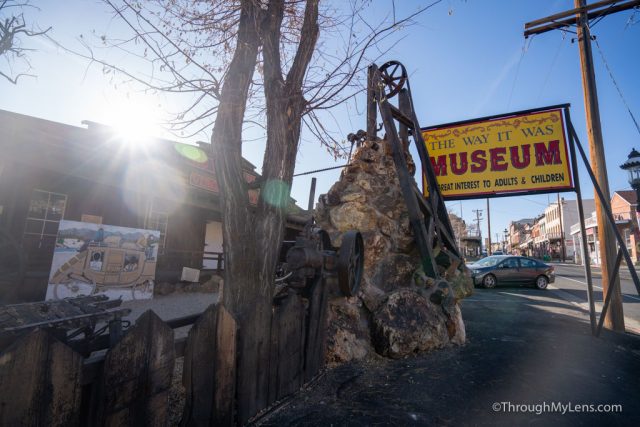
Back on Highway 50
After leaving Virginia City, we made our way down to Highway 50 and hopped back on the route. We stopped at two attractions on our way to Fallon.
Cactus Building
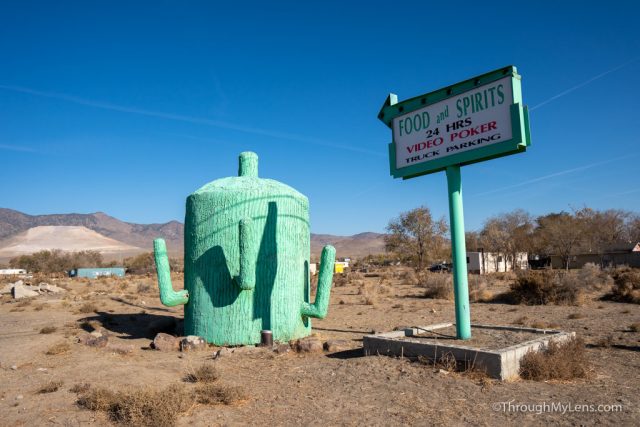
I don’t know much about this spot, but I love seeing old roadside buildings like this. The restaurant and store it is attached to have closed, but the building still stands there for the foreseeable future.
Fort Churchhill Park
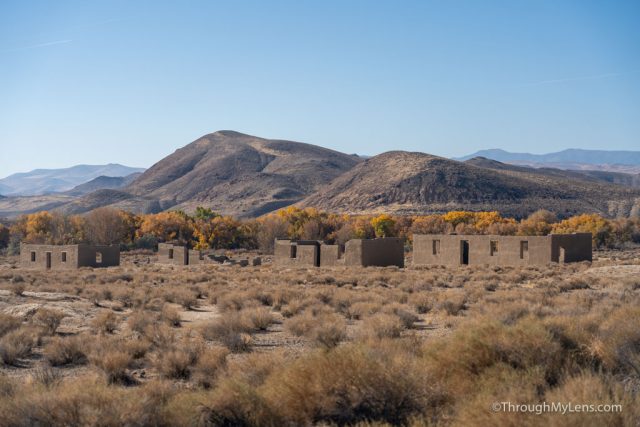
Fort Churchill Park is 15 minutes south of Highway 50 and is a worthy detour. The park houses the remains of Fort Churchill, which was used in the 1860s. The park has many adobe buildings still standing and a short hiking path to go around to them.
Fallon
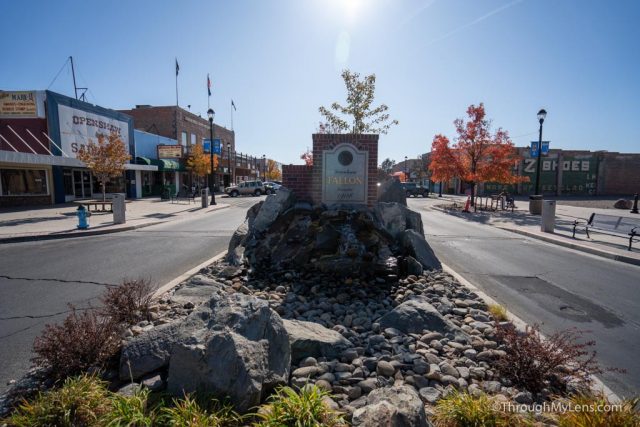
From Fort Churchill, it is a 40-minute drive to Fallon, the largest city on Highway 50 (not including Carson City). Here you can find a historic downtown, lots of restaurants, fast food, and grocery stores.
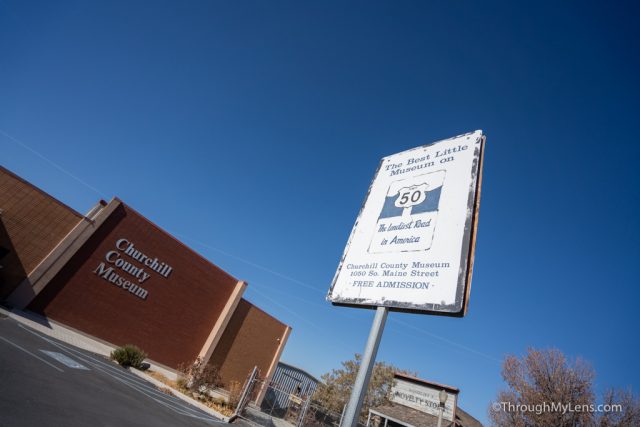
Also, be sure to stop at the Churchill County Museum, known as the “best little museum on the loneliest road in America.” This museum has a lot of great exhibits and is worth an hour of your time.
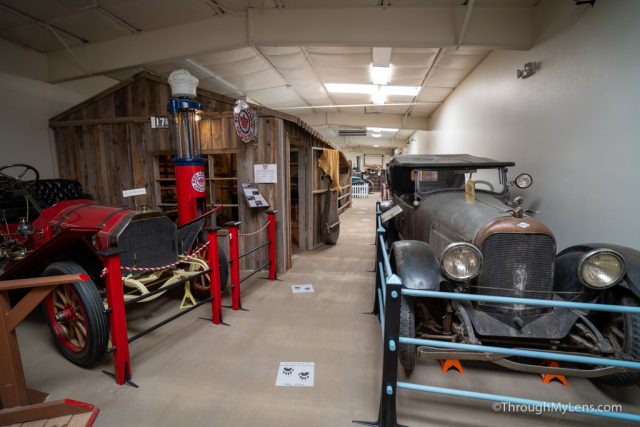
From there, we left Fallon and made our way towards the more remote stretches of the route that we would be driving on for the rest of the road trip. During this part of the drive, there are only towns every 60-70 miles, and a few of the towns have nothing other than maybe a gas station. It is always best to fill up with gas when you get the chance while on Highway 50.
Grimes Point
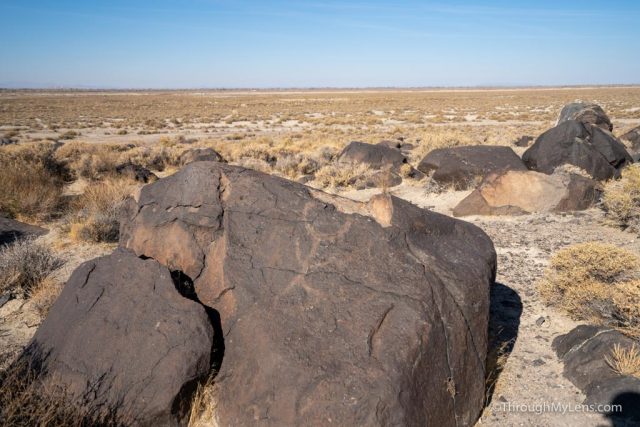
Grimes Point was the next stop for us. This area preserves many Native American petroglyphs, and you can see dozens of them on a short trail. The trail takes you out from the parking area and makes a small loop through the rock area where the petroglyphs reside. It was a lot of fun to explore, and it would be a great spot for a family to stop.
Sand Springs Station
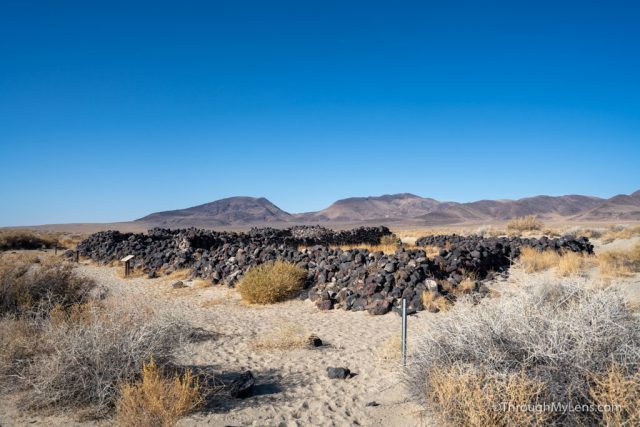
Heading on from Grimes Point, we arrived at Sand Springs Station. The ruins here are part of a station used for the Pony Express Route that ran along what is now Highway 50. The ruins are one of the best-preserved, but they are still basically just a pile of rocks that used to be the station’s walls. It is fun to see, though, especially if you are interested in the Pony Express.
Singing Sand Dunes
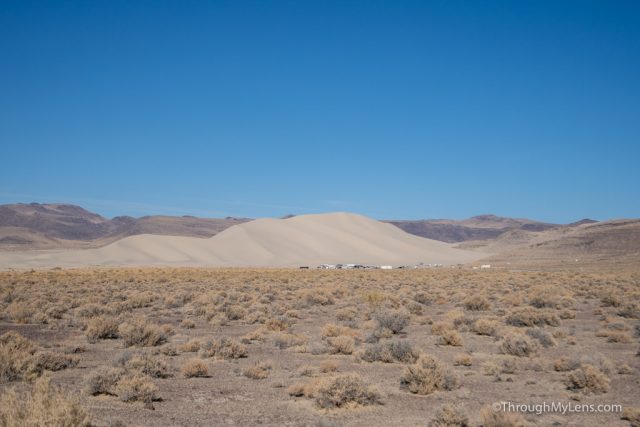
Next to Sand Springs Station is the Singing Sand Dunes, a collection of massive sand dunes almost 2 miles long. This is a popular area for off-roading, but we didn’t spend much time there other than to take a quick photo.
Middlegate Station
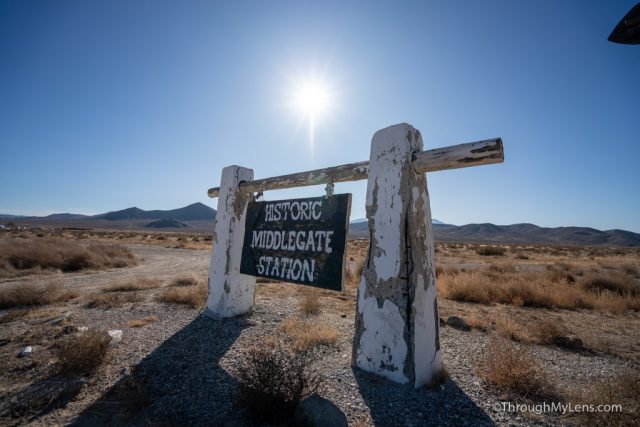
The next point of interest is Middlegate Station; a must stop in a particularly lonesome part of the drive. This bar and restaurant have gained recognition over the years with the famous “monster burger challenge” people come worldwide to try.
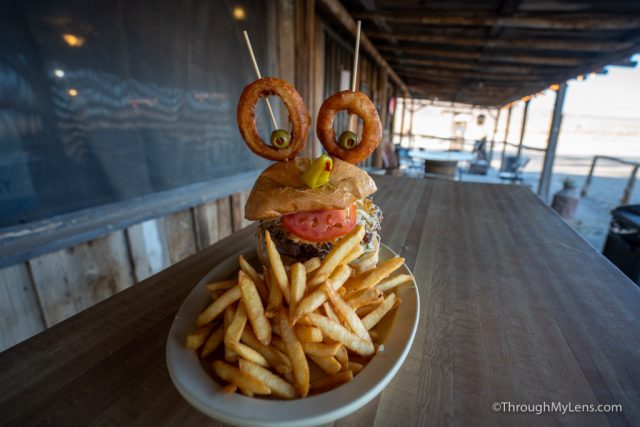
My dad and I just ordered one to split as neither of us could do the challenge and eat the whole thing ourselves. It was actually a delicious burger, and it was a fun place that has that historic charm.
Shoe Tree
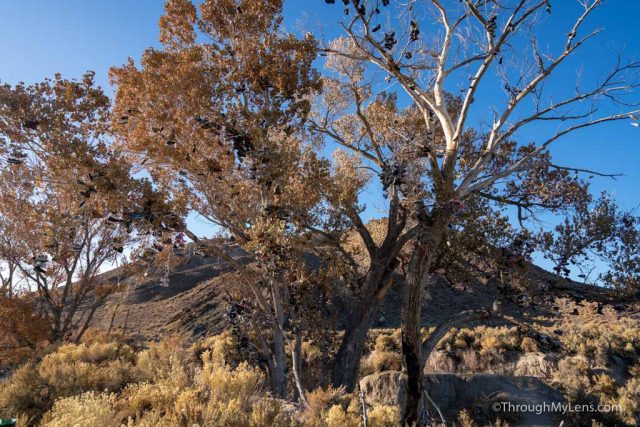
Only a few miles outside of Middlegate, you will see a large tree filled with shoes on your left-hand side. This tree is a fun pit stop for travelers wanting to leave their mark on Highway 50. The story of how the tree started getting shoes is also funny to read (check it out here). My dad and I added shoes to the tree, a fun tradition on the route.
Austin
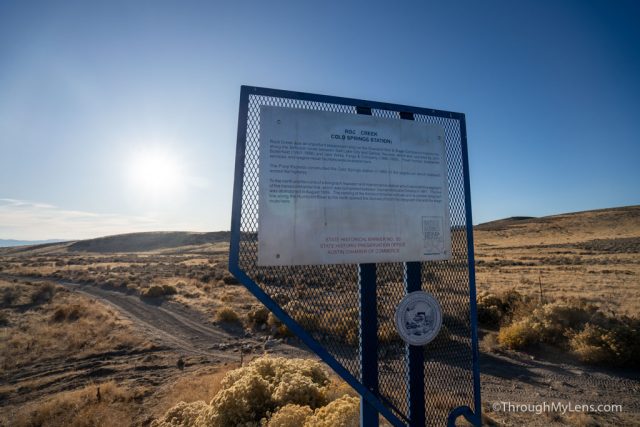
From the shoe tree, it is a good drive to the next town, Austin. This is one of the smallest towns on the route, and when we drove through, the only thing I saw open was a gas station. Do make sure to stop at Stokes Castle though!
Stokes Castle
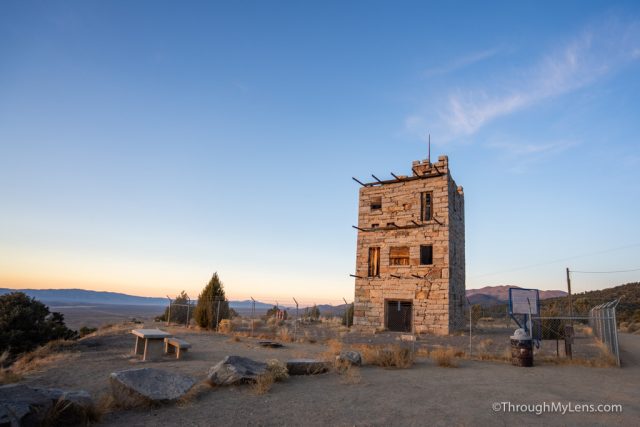
Stokes Castle is a three story stone building on the outskirts of town. My dad and I stopped here for sunset and were glad we did. The historic building, which was only lived in for a short time in the 1800s, has a massive view of the valley below. It was one of the highlights of the drive for me. By the time we left Stokes Castle, it was dark, and we did the rest of the drive to Eureka in the dark. Note that it is desolate out here, and there are no lights as you drive along.
Eureka
Eventually, we made it to Eureka and checked into our hotel, the Jackson House Hotel.
Jackson House Hotel
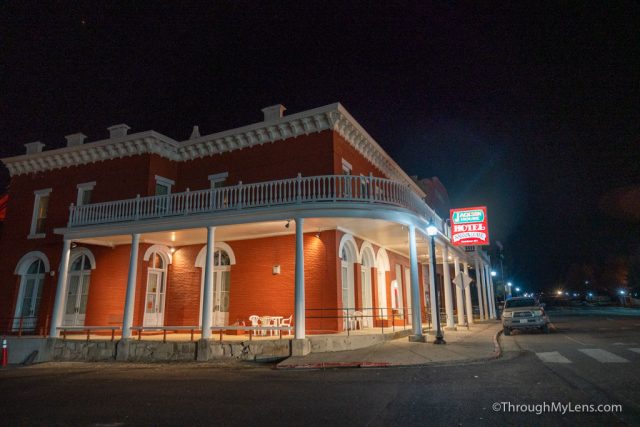
I booked this hotel in advance as I really wanted to stay here. The hotel was built in the 1800s, and it is supposedly haunted. We didn’t see any ghosts, but my dad and I loved roaming this old hotel and seeing all the photos and antiques scattered about. Our time at the Jackson House Hotel marked the end of our second day on Highway 50.
Day 3
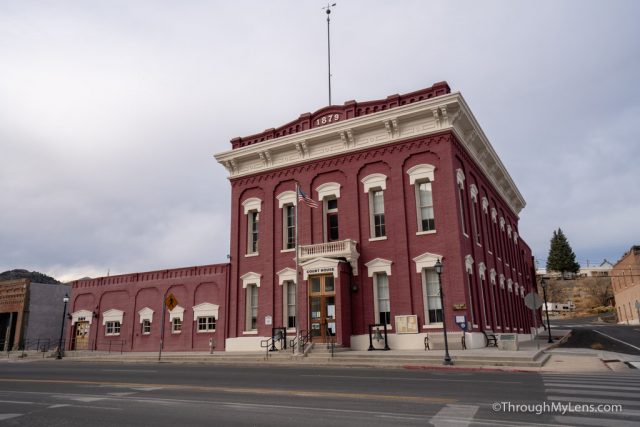
Our third day on Highway 50 brought us from Eureka all the way to the border of Utah and Nevada and then back to Ely to spend the night. Here is what we did on day 3.
Eureka
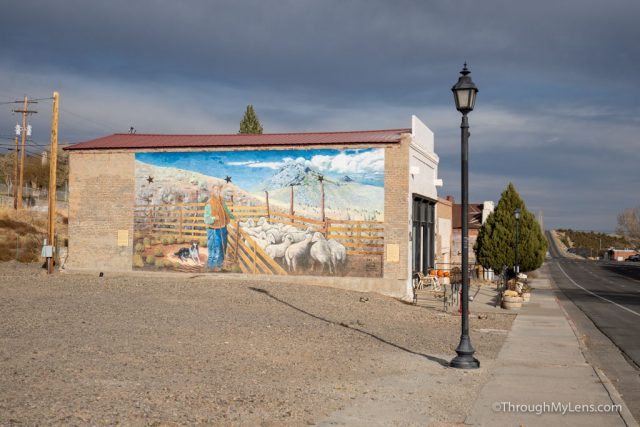
Since we arrived late the night before, we decided to explore Eureka a little bit before leaving. There are three historic structures that you should see while in the city.
Eureka Sentinel Museum
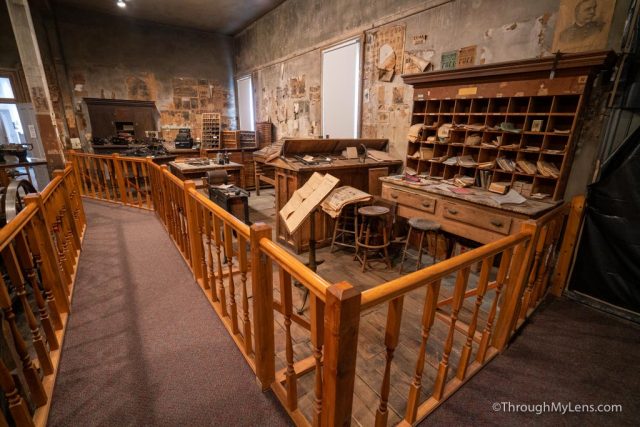
First up, the Eureka Sentinel Museum preserves what an 1800’s newsroom would have looked like. They have all of the tools that were used and even posters that were printed with these tools. It is a fascinating stop.
Eureka County Courthouse
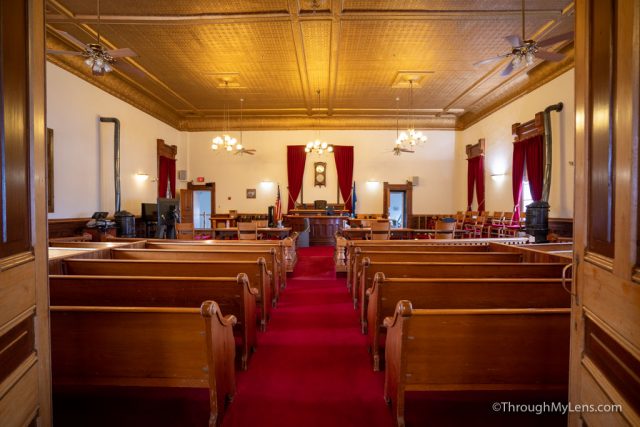
Next up, the courthouse in Eureka was also built in the 1800s. The courthouse is still in use today, and if there is nothing happening while you are there, you can head in and look around.
Eureka Opera House
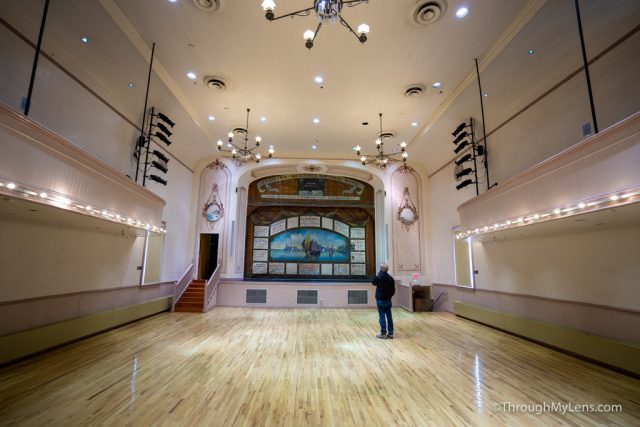
Lastly, the opera house is across the street from the courthouse, and it was also built in the 1800s. This opera house has seen many famous entertainers, and then the entire backstage area is tagged with their signatures. It was awesome to walk around and see and a highlight in Eureka.
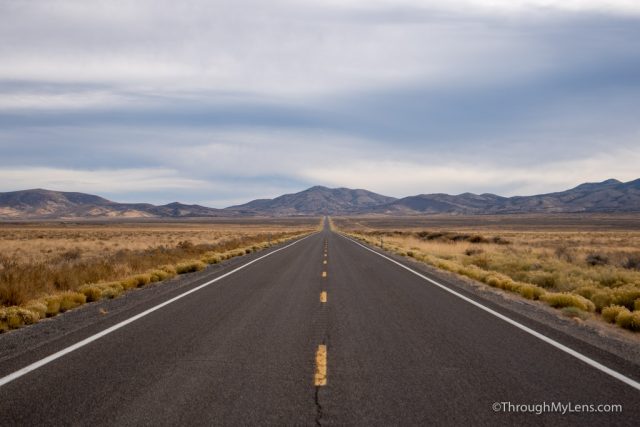
From Eureka, the drive to Ely takes about an hour. There is nothing to see along the drive other than historic signs and plaques for Nevada and the Pony Express. It is a beautiful part of the drive, and we really enjoyed it.
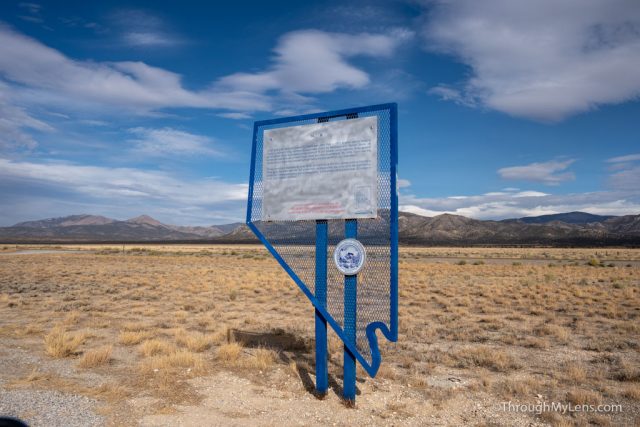
Ely
Ely is one of the larger towns on the drive as well. In it, you will find restaurants, casinos, museums, and fast food. We spent a few hours explore Ely, and here are the places we stopped.
Murals
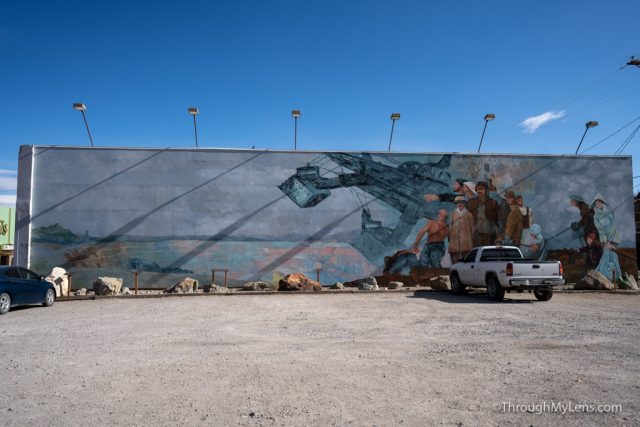
Ely’s downtown area has a lot of murals, which focus on historic parts of the city like the pony express, the mining history, and Ely itself. There are a bunch to see downtown.
Nevada Hotel
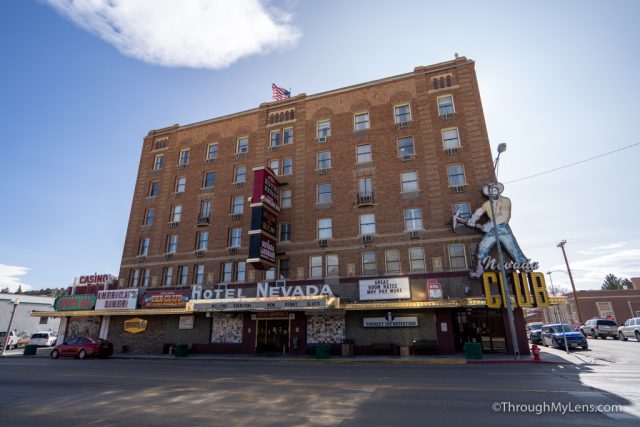
Also in downtown, the Nevada Hotel is the main point of interest in Ely. It was built in the early 1900s, and it has a walk of fame outside that spotlights the famous people that have stayed here. This is where we stayed for our third night on the route, and it was a fun hotel.
White Pine Public Museum
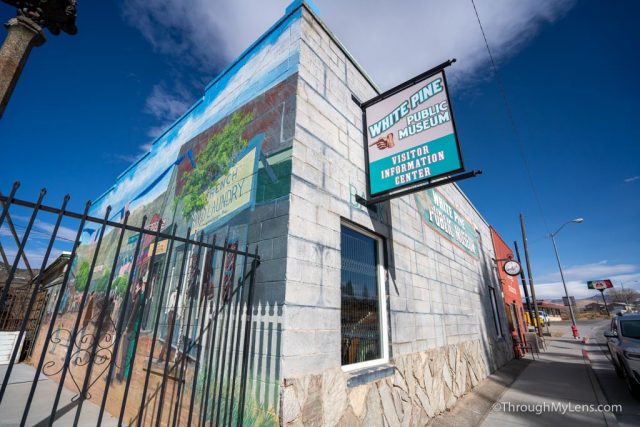
Moving on, the White Pine Museum focuses on the area’s history, collecting artifacts from over the last century. The main highlight here is the cave bear statue that they have on display, but many historic buildings have been moved here, and that you can walk inside as well.
Nevada Northern Railway Museum
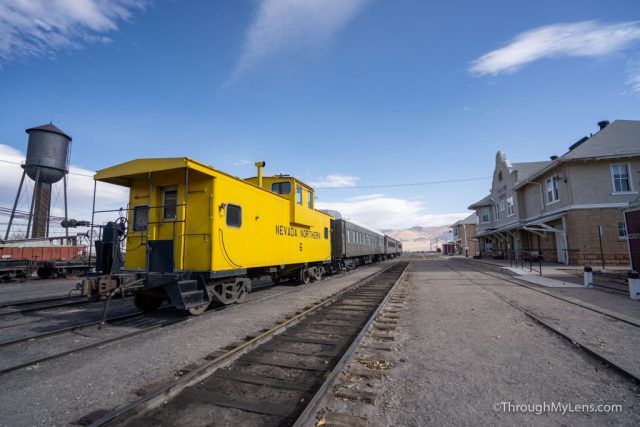
Lastly, Ely is home to what has been called “one of the best-preserved rail yards in America.” The rail yard and corresponding museum are a must stop while in Ely. The museum preserves some of the old rail yard offices, while the rail yard has many old trains on display.
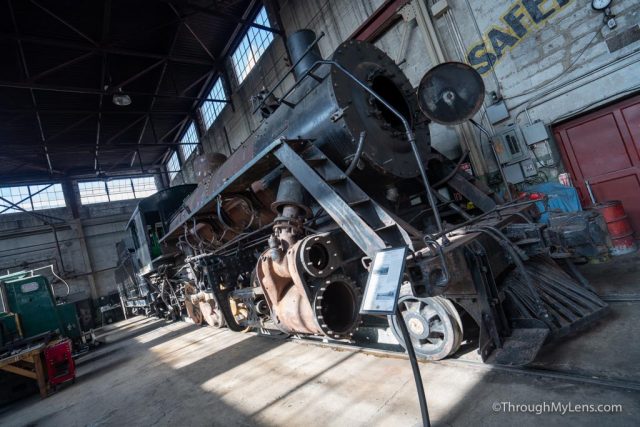
The best part to visit is the shop where they are actually working on the trains and which you are free to roam. It was crazy to see all the tools they use and the different train cars on display.
After leaving Ely, there are no real towns on the rest of the route. I recommend getting gas before you leave.
Ward Charcoal Ovens State Park
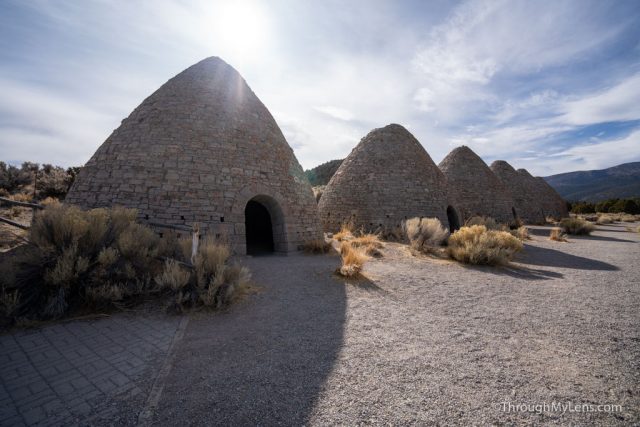
About 30 minutes south of Ely, we left Highway 50 again to visit Ward Charcoal Ovens State Historic Park. This park houses the remains of a half dozen charcoal ovens used to process silver ore in the 1870s. They are really well preserved and cool to see.
Connors Pass
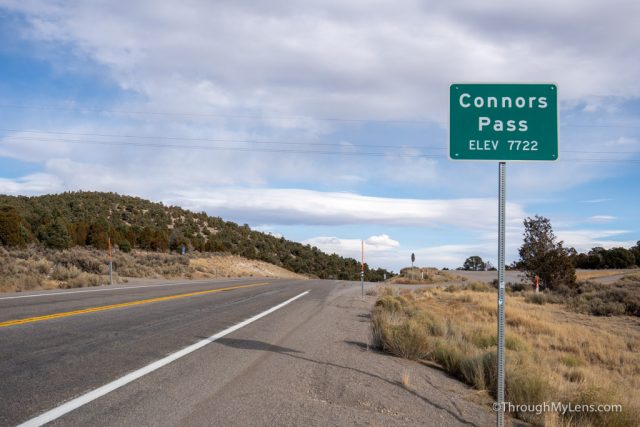
From Ward Charcoal Ovens State Historic Park, you will make your way over Conners Pass, the tallest of the 17 passes on the drive. This pass sits at 7,722 feet.
End of the Road (State Line)
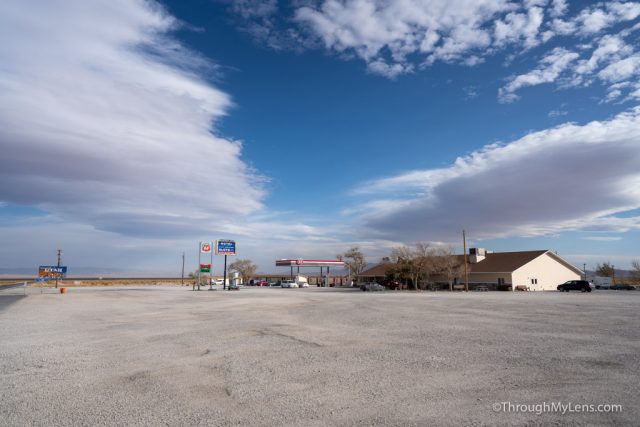
From Connors Pass, the next main point of interest is either the state line or Great Basin National Park. We went to the state line first.
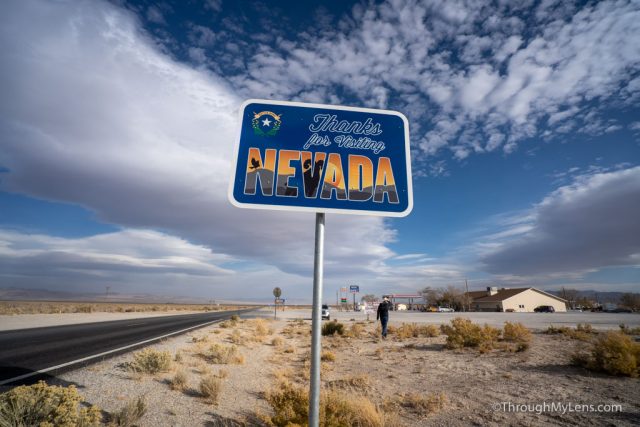
The state line between Utah and Nevada has basically nothing. There is a gas station here and a sign for each respective state. It is just what you would expect at the end of the loneliest road. Also, note that the next gas after the state line is not for another 80 miles.
Great Basin National Park
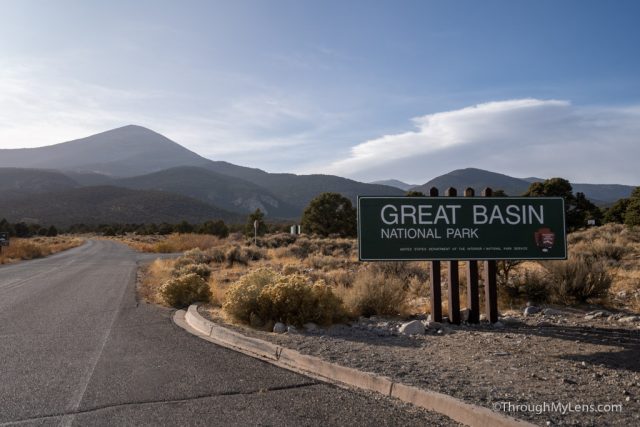
After visiting the state line, we backtracked to Great Basin National Park. In 2020, many of the park’s main attractions were closed, so we didn’t get to go to the visitors center or see the caves. We did take the scenic drive all the way up to 10,000 feet and do some hiking though.
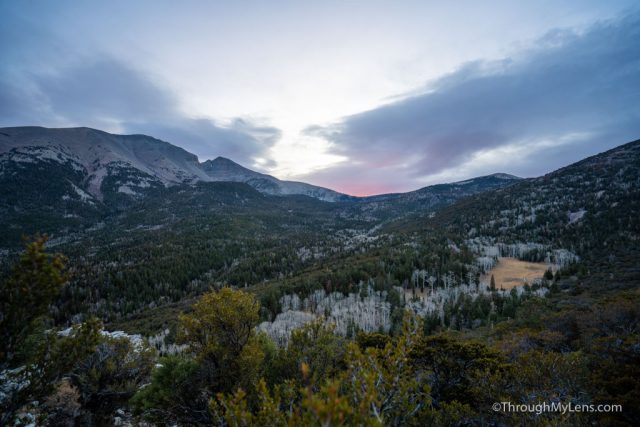
Along the way, you can pull off at Mather Overlook, which is a great viewpoint of Wheeler Peak and the desert below you.
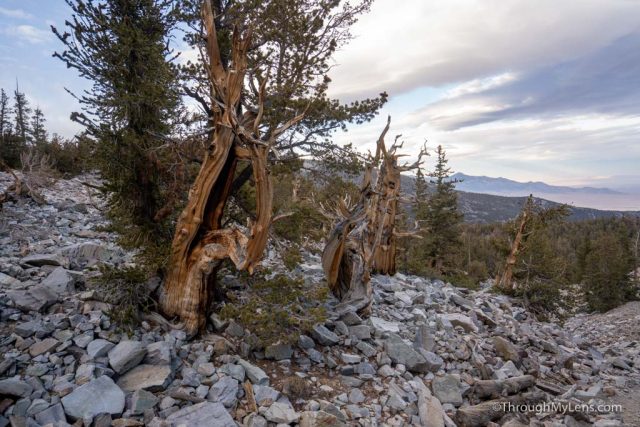
From there, you can head up to the end of the road where the trailhead for the ancient bristlecones and glacier is. We just hiked to the ancient bristlecones as the light was going down, but seeing these ancient bristlecones at the end of the trip was a fantastic experience.
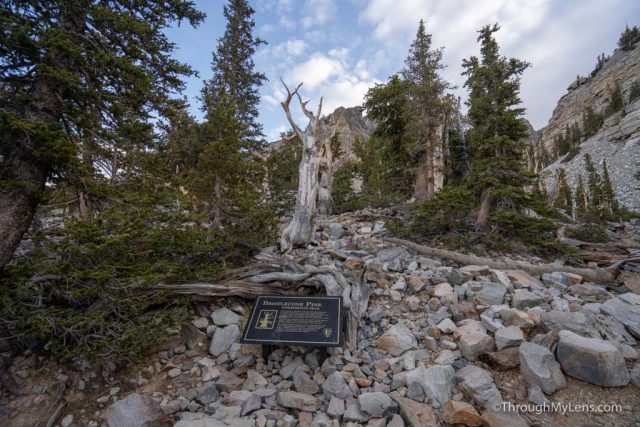
These trees are only found in a few places on earth and are the oldest trees in the world. The hike to get to them is 3 miles round trip, but don’t underestimate it as you start at over 10,000 feet.
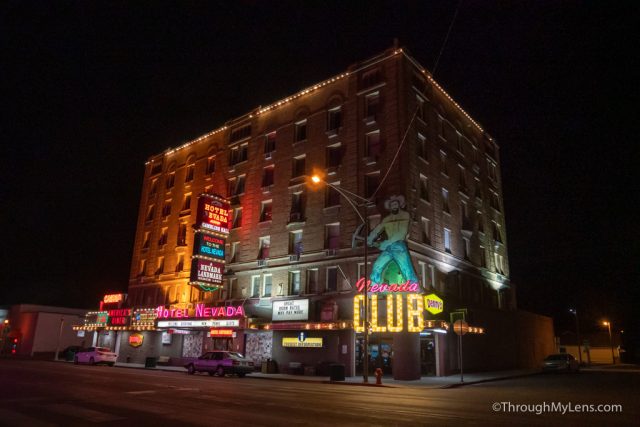
After finishing the hike, the sun had gone down, and we made the drive back to Ely in the dark. We spent our last night on the route at the Hotel Nevada in Ely and then woke up and drove all the way back to Reno the next day.
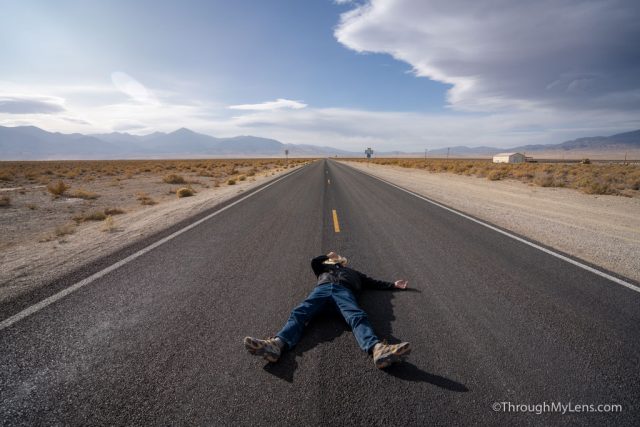
My dad and I really fell in love with this part of Nevada; it was stark, desolate, and beautiful. If you have the chance to make this road trip, I am sure you would enjoy it. Let me know what you think in the comments!

